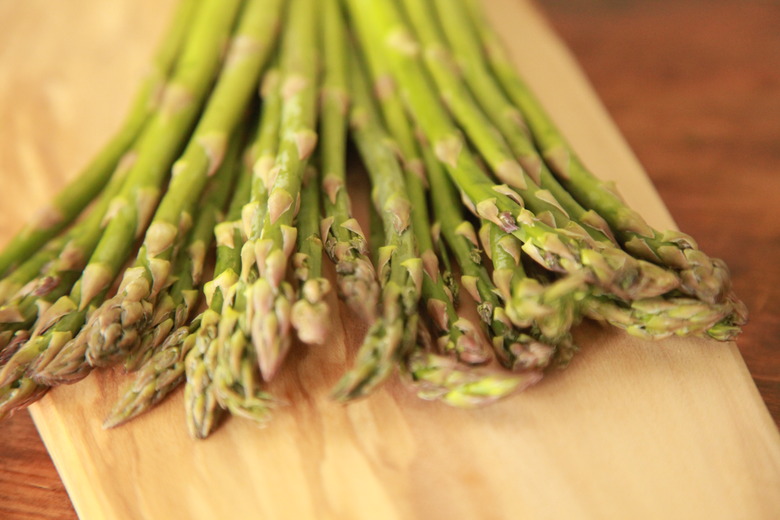How To Grow Asparagus In Raised Beds
Asparagus (Asparagus officinalis, USDA zones 3-10) is a perennial vegetable plant that can be a long-lasting, permanent addition to a home garden. This vegetable requires well-draining soil to thrive, as waterlogged soil causes root rot. Growing asparagus in raised beds offers them proper drainage and an easier planting bed that doesn't require deep tilling.
Preparing a Raised Bed
Preparing a Raised Bed
Prepare the raised bed before the last frost of the season ends. Though asparagus can tolerate some light shade, it's best to locate the raised bed in an area that gets six to eight hours of sunlight each day. Raise the bed to at least 12 inches in height to accommodate drainage and growth.
Prepare the bed with a good-quality soil that is blended with compost or other organic matter such as manure or peat moss. Laying black plastic over the entire raised bed helps to retain heat within the soil for an early spring planting.
Remove the black plastic when there's no more danger of frost and dig trenches 10 inches deep and five feet apart with a long-handled garden cultivator or trenching shovel. In each trench, sprinkle one pound of triple superphosphate (0-46-0) for every 50 feet of soil.
Planting Asparagus
Planting Asparagus
Purchase 1-year-old asparagus crowns. For the best harvest, ensure the asparagus crowns are healthy and male by choosing selections that are labeled as male plants. If the packaging doesn't list this, a call to your local cooperative extension office can help with your selection by giving you a list of male plants that prosper in the zone where you live. Female asparagus plants use too much energy on producing seeds, leaving a less-than-desirable crop production. Soak the asparagus crowns in a bucket filled with warm water for one hour before planting.
Place the asparagus crowns into the trenches on their sides with the buds facing the same direction, about 12 inches apart, and cover with soil up to the buds. Water the plantings until the soil is moist, taking care not to saturate. Continue to water the crop once or twice per week to keep the soil moist. As the stems grow, cover with soil from the sides of the trench until the level of soil in the trench is even with the surrounding soil.
Spread two to three inches of mulch throughout the asparagus bed when the trench is filled in, which will help the soil to retain more moisture and will act as a weed barrier within the raised bed.
Keep the asparagus bed free of weeds, pulling them out regularly by hand. A weedy bed means both weeds and vegetables are competing for the same nutrients and water and can cause a weak crop for future growing seasons.
Harvesting Asparagus
Harvesting Asparagus
Leave the asparagus crowns to grow tall and ferny their first growing season within the raised bed. This first season will provide the asparagus crowns the energy they need to grow a more productive harvest in the years to come.
Harvest a few asparagus spears when the plants are in their second growing season and reach heights of seven to nine inches tall. Cut the spears off the plant at soil level with a sharp knife. Leave half of the asparagus spears on the plant to provide energy for the third season's crop.
